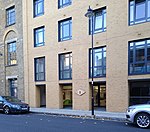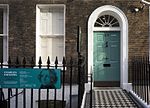Coldbath Fields riot

The Coldbath Fields riot took place in Clerkenwell, London, on 13 May 1833. It began as a meeting organised by the National Union of the Working Classes (NUWC), a political organisation associated with the Southwark-based Rotunda radicals. The NUWC called for the extension of the electoral franchise beyond that granted in the Reform Act of 1832 and opposed the Metropolitan Police, which had been established in 1829, as an infringement of civil liberties. The Whig government of Lord Grey opposed the meeting and Home Secretary Lord Melbourne declared it illegal. The police infiltrated the NUWC in the run-up to the meeting and planned to disperse it. There are varying figures for the number present at the meeting of between 70 and 600 police officers and 300 to 6,000 members of the public. Both Commissioners of Police of the Metropolis, Sir Charles Rowan and Sir Richard Mayne, were present and two British Army officers stood by to summon military reinforcements if needed. It is disputed which side started the violence but Rowan led a number of baton charges that dispersed the crowd and arrested the NUWC leaders. The crowd were pursued into side streets and a portion were trapped in Calthorpe Street. Three police officers were stabbed and one, Constable Robert Culley, was killed. There were few serious injuries inflicted on members of the public. A coroner's jury ruled Culley's death was justifiable homicide as the police had failed to read the Riot Act and been heavy handed in their dispersal of the crowd. This verdict was overturned by a government appeal to the High Court of Justice, but no man was brought to trial for Culley's murder. George Fursey was charged with the wounding of the other two officers but was acquitted by a jury at the Old Bailey. The coroner's jury, who had been feted by the Radicals, complained to the House of Commons. A select committee investigated the riot and largely exonerated the police, noting that Melbourne's declaration of the meeting as illegal was invalid as it had not been signed.
Excerpt from the Wikipedia article Coldbath Fields riot (License: CC BY-SA 3.0, Authors, Images).Coldbath Fields riot
Calthorpe Street, London Holborn (London Borough of Camden)
Geographical coordinates (GPS) Address Nearby Places Show on map
Geographical coordinates (GPS)
| Latitude | Longitude |
|---|---|
| N 51.525 ° | E -0.11472222222222 ° |
Address
The Postal Museum - Visitor Cycle Parking
Calthorpe Street
WC1X 0JZ London, Holborn (London Borough of Camden)
England, United Kingdom
Open on Google Maps











